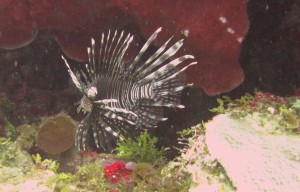It’s going to be a crazy week. It started yesterday with some pre-DEMA PADI programs: the 2011 Course Director Update and PADI Live!
The Course Director update covered a lot. What’s new with Project AWARE, evaluation training for knowledge development presentations, instructor development updates, new programs like Sidemount Diver and Recreational Rebreathers, a glimpse into how business looks for the industry and more.
Project AWARE relaunched this year with two long term objectives on marine debris and shark conservation. As divers, we have a great opportunity to see change as well as see a permanent record of what people have done to the planet. We are in a unique position to not just observe, but to share that with others. Check out the Dive Against Debris and Shark Conservation information at www.projectaware.org
One of the cool things in Instructor Development is that PADI’s Dive Theory online will credit towards the theory exams at PADI Instructor Exams starting next year. That means rather than sitting for the Dive Theory exams (Physics, Physiology, Equipment, Recreational Dive Planner and Dive Skills & The Environment), a candidate can present an eLearning record and just take a Quick Review quiz at the IE. I’m not sure exactly when this will happen, but it’s slated for early next year.
Sidemount and Rebreathers–wow! This has come a long way. I have to admit I still view Sidemount as more of a Tec diving thing, but it might open up a lot of doors for people with back problems. There’s no requirement that a diver has to carry their gear long distances or in a position that might hurt them. Sidemount, with tanks slung along your sides, might open diving to a whole group of people that weren’t able to handle a tank on their back. I can see I’ll be taking Chris Langehaug’s Sidemount class when I get back to Utah.
Rebreathers have also come a long way. I’m hoping to get a glimpse of some of the new Recreational Rebreathers at DEMA this year. The rebreathers themselves are more complicated devices, but that makes them easier for the diver to use. A simplified way to determine if there are problems, a short list of what to do if there is a problem and a fun way to dive–with out bubbles!
PADI Live! (with red carpet and all) was a great program. Drew Richardson gave us a good look at the Dive Industry and reminded us all that we’ve the best jobs in the world. We get to explore that 70% of the planet covered with water and we get to share it with others. For me, I’ve always wanted to be an astronaut. Ok, NASA isn’t going to hire me, so the way I get to be weightless is in the water. Drew told us about an astronaut that is on the International Space Station. He’s a PADI Instructor and he thinks and dreams about diving while in space! That makes me think I’ve the better job (I’d still try the astronaut gig if I had the chance).
It was awesome to see my friend Peter from Abyss Scuba be recognized for all he’s doing. Peter was in my Course Director Training Course and he’s a great example of how to succeed in this industry. Congrats, Peter!
Time to head to the Orange County Convention Center…DAN Instructor/Trainer Update this morning.


